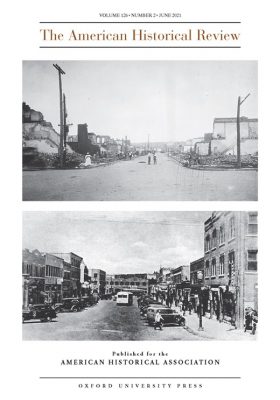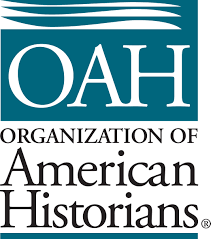
I am writing this post wearing my “Defend History!” button. The button was distributed by David Blight, Yale University, president of the Organization of American Historians (OAH) at the annual conference last spring. Blight has been quite active and prominent in defending history from the assault by Donald Trump, president of the United States.
My original intention was to review the battle in 2025 since January. The focus was to be the annual conferences of the AHA in January and OAH in April, the various executive orders, and the AHA study on what social studies teachers actually teach. I still hope to do so and to include the American Revolution 250th in the discussion. However, there are some current events which deserve attention now.
LOYALISTS
U.S. Department of Education, AFPI, TPUSA, Hillsdale College, and Over 40 National and State Organizations Launch America 250 Civics Coalition
ED and 40 Partners Launch America 250 Civics Education Coalition
September 17, 2025
The U.S. Department of Education (the Department), alongside the America First Policy Institute (AFPI), Turning Point USA, Hillsdale College, and more than 40 leading national and state-based organizations today announced the launch of the America 250 Civics Education Coalition. This landmark initiative is dedicated to renewing patriotism, strengthening civic knowledge, and advancing a shared understanding of America’s founding principles in schools across the nation.
The coalition, announced on Constitution Day, builds upon the Trump Administration’s commitment to celebrate America’s 250th anniversary next July.
With oversight from U.S. Secretary of Education Linda McMahon and the Department, the AFPI-led coalition will spearhead nationwide initiatives to engage students, educators, and communities in conversations about liberty, citizenship, and America’s enduring values.
“As America approaches 250 years since its founding, we are proud to announce this coalition to ensure every young American understands the beauty of our nation and is equipped with the civic knowledge required to contribute meaningfully to its future,” said U.S. Secretary of Education Linda McMahon. “A country cannot survive if its values are forgotten by its people. More than ever, we need to restore the vitality of the American spirit, and this coalition will take bold steps to educate, inspire, and mobilize youth toward active and informed citizenship.”
On surface, there is merit to this initiative and the need to reinvigorate pride in the country, respect for the law, and familiarity with American history. But this ignores that Trump is in the process of dismantling the Department of Education with the intention of eliminating it. At some point he may realize that he needs the Department of Education around to implement his vision and to monitor compliance by the school systems.
It also ignores the erasing of American history currently underway by the NPS, the Smithsonian, and other federal institutions. It overlooks the rival with the Confederacy, one of the most divisive events in American history. The list of participating organizations omits many of the leading history organizations in the United States plus the very institutions of higher learning with expertise in these areas. Of course, it is precisely those organizations that have been under attack by Trump.
PATRIOTS
Not surprisingly, this action by Trump led to a vigorous response by these leading history organizations. Action alerts were emailed to the members of them as well as shown below.
Action Alert: Submit Comments on Proposed Patriotic Education Funding Priority
On September 17, 2025, the US Department of Education announced plans to prioritize patriotic education in its discretionary grant programs, initiating a mandatory 30-day public comment period. The American Historical Association (AHA), National Council for the Social Studies (NCSS), and Organization of American Historians (OAH) jointly encourage our members and other supporters of a full account of history to submit comments to the federal register by October 17, 2025.
How You Can Help
Earlier this year, the AHA and the OAH outlined in a statement, endorsed by the NCSS, the damaging effects such a “narrow conception of patriotism and patriotic education” would have on US history education. We encourage members of our organizations and other supporters of public education to submit public comments by October 17, 2025. This is our opportunity to help the Department of Education refine its understanding of what constitutes “an accurate and honest account of American history.”
Students deserve an honest and full account of US history. This funding priority promises to support the teaching of “accurate and honest” content. We consider this goal profoundly important, and this is why we are concerned about efforts to scrub historical content from federal websites, remove factual signage at historic sites, and attack curatorial decisions at Smithsonian museums, alleging that this history is insufficiently celebratory in its depiction of the United States. A 2024 NCSS and Encourage survey of more than 50,000 students and almost 1,000 educators showed that social studies teachers and their students identified the ability to visit museums and historic sites as a top priority for both groups.
We do not need to think alike in order to find common purpose; the founders of the United States found common purpose amid multiple conflicts and divisions. The proposed Department of Education priority states that “a shared understanding of our political, economic, intellectual, and cultural history—including our national symbols and heroes” is a prerequisite for informed patriotism. The founding generation of the United States did not have a shared understanding of their history, their symbols, or their heroes; nor have subsequent generations. US patriotism is diverse and multifaceted and it is capacious enough to include even those who are critical and skeptical about patriotism.
The Department of Education’s rule asserts that there can only be one interpretation of an event, an assertion that runs contrary to the practice of history and the importance of allowing people to engage in civil deliberations. Disagreement also is a strength of our political system and not a flaw.
Good history instruction opens doors—it invites students to ask compelling questions and encourages intellectual curiosity and supports informed debate. In a recent survey conducted by NCSS and Encourage, 55% of students participating noted that the main benefit of social studies education is “understanding my role as a citizen.”
- Many history and social studies educators already provide a strong foundation for reflective patriotism, including regular teaching of the founding documents. In 2024, the AHA published results from a survey [completed in 2022] of over 3,000 middle and high school US history educators. This research underscored the point that social studies and history teachers are professionals who are primarily concerned with helping their students learn central elements of our nation’s history. Nearly 100% of the teachers surveyed rated “developing informed citizens for participation in a democratic society” as a goal for their history courses, and 94% identified this as an important or very important outcome.
As organizations that together represent educators in all 50 states (and their respective school districts), we have consistently supported the idea that states and local education entities are best positioned to develop social studies standards, and we have long defended the intellectual freedom of both students and teachers.
The teaching of US history should invite discussion, encourage inquiry, and reflect the diverse people, places, and events that shape our shared human experience. A strong social studies education helps students develop the ability to analyze information, engage in meaningful discourse, and contribute thoughtfully to their communities.
The commemoration of the 250th anniversary of American independence must provide opportunities for all Americans to learn from our shared history, one that includes recognition of the complex challenges, aspirations, and struggles across this history to enact a more perfect union.
The Declaration of Independence has worldwide significance, and the US Constitution was not solely the derivative of Western political thought. … The founding of the United States occupies a profound and complex place in the larger context of world history, and the rule’s narrow limitation to “Western Civilization” promotes incomplete history and is a disservice to students, to Americans, and to the larger world.
It is both misleading and ahistorical to describe “Judeo-Christianity” as an organizing principle of patriotic education about US history. It not only minimizes the contributions of other religious traditions but also downplays the long history of religious discrimination, division, exclusion, and persecution within diverse worlds that this policy would flatten into a singular tradition.
The devil is in the details. It remains to be seen exactly what curriculum this coalition produces. Will its implementation be voluntary? Will state superintendents accept the proposed curriculum whatever it should turn out to be? Will the appropriate teacher-training sessions be held so the new curriculum can be implemented? Where exactly within the existing curriculum will the new one be inserted? Will there be any beta-site testing of the new curriculum or will it simply be promulgated full stop? What will the penalty be if a state or local school system declines to implement it? What happened to the vaunted cry of states’ rights? What happened to the constantly expressed opposition to having students indoctrinated with un-American values? Will such indoctrination suddenly be championed?
The petitions are likely to have no effect on Trump. He will go full-speed ahead to develop and implement his curriculum. The odds are such efforts will be met by the same resistance as demonstrated in the recent “No Kings” rally. Plus he continues to accumulate power and seeks to extend his rule beyond 2028.
My position has been that we are reliving America’s first civil war. For the Patriots to remove the Loyalists from power will prove quite difficult. Skirmishes are already occurring such as in Chicago. Gerrymandering is altering the battlefield. Voter suppression is planned. So far there is no modern George Washington or Founding Fathers to rally the citizens and lead the Patriots. There is no Thomas Paine either, no Declaration of Independence for the 21st century, and the prospect of rigged elections starting in November 2025 looms large. The first campaign of the current civil war between the Patriots and the Loyalists will come to a head on November 4, 2025, only days from now. It will provide an opportunity to gauge the strength of the two sides.







